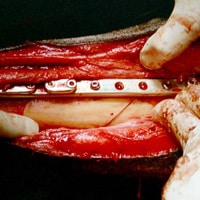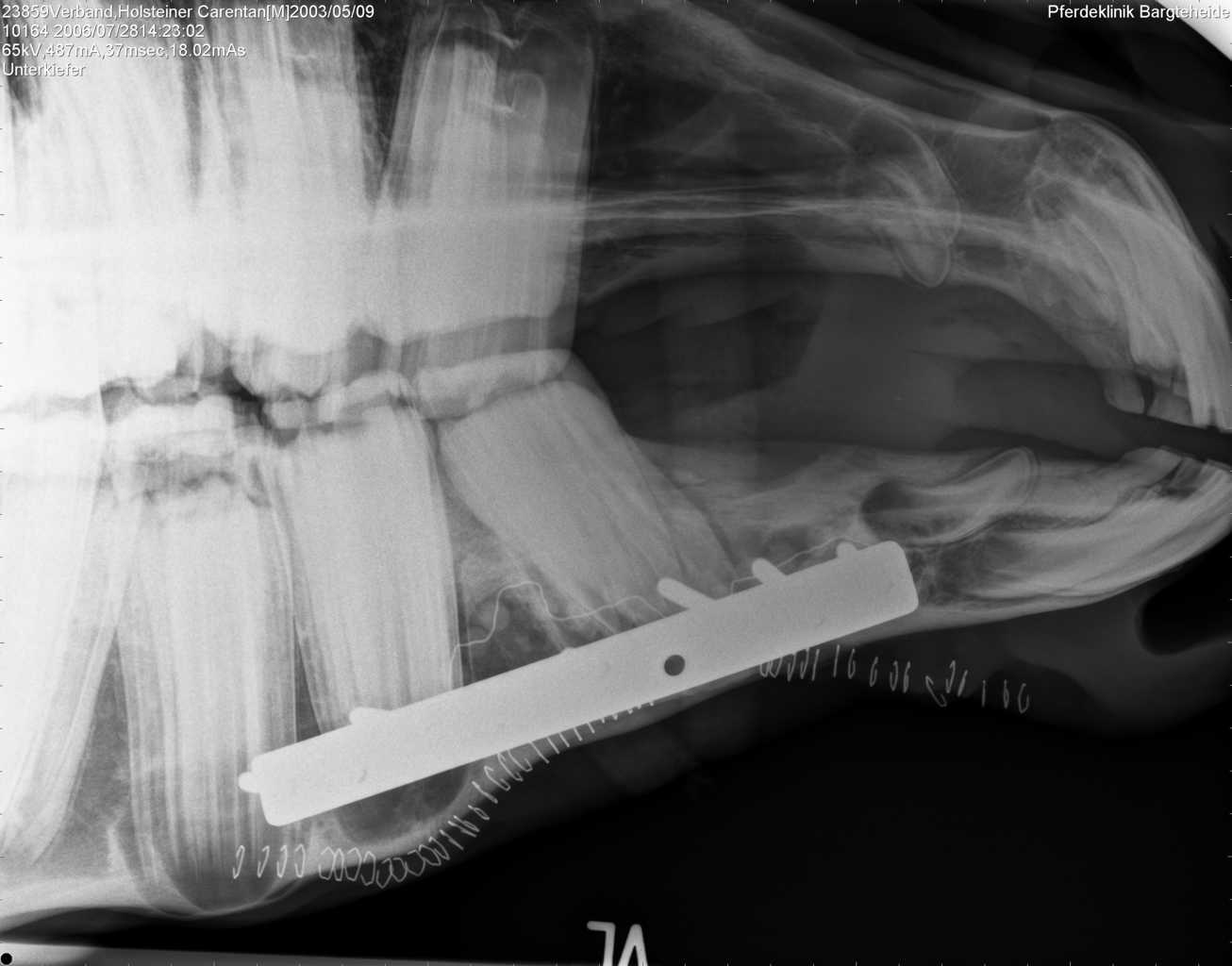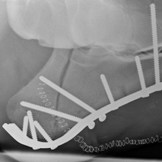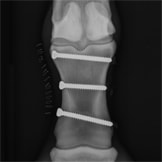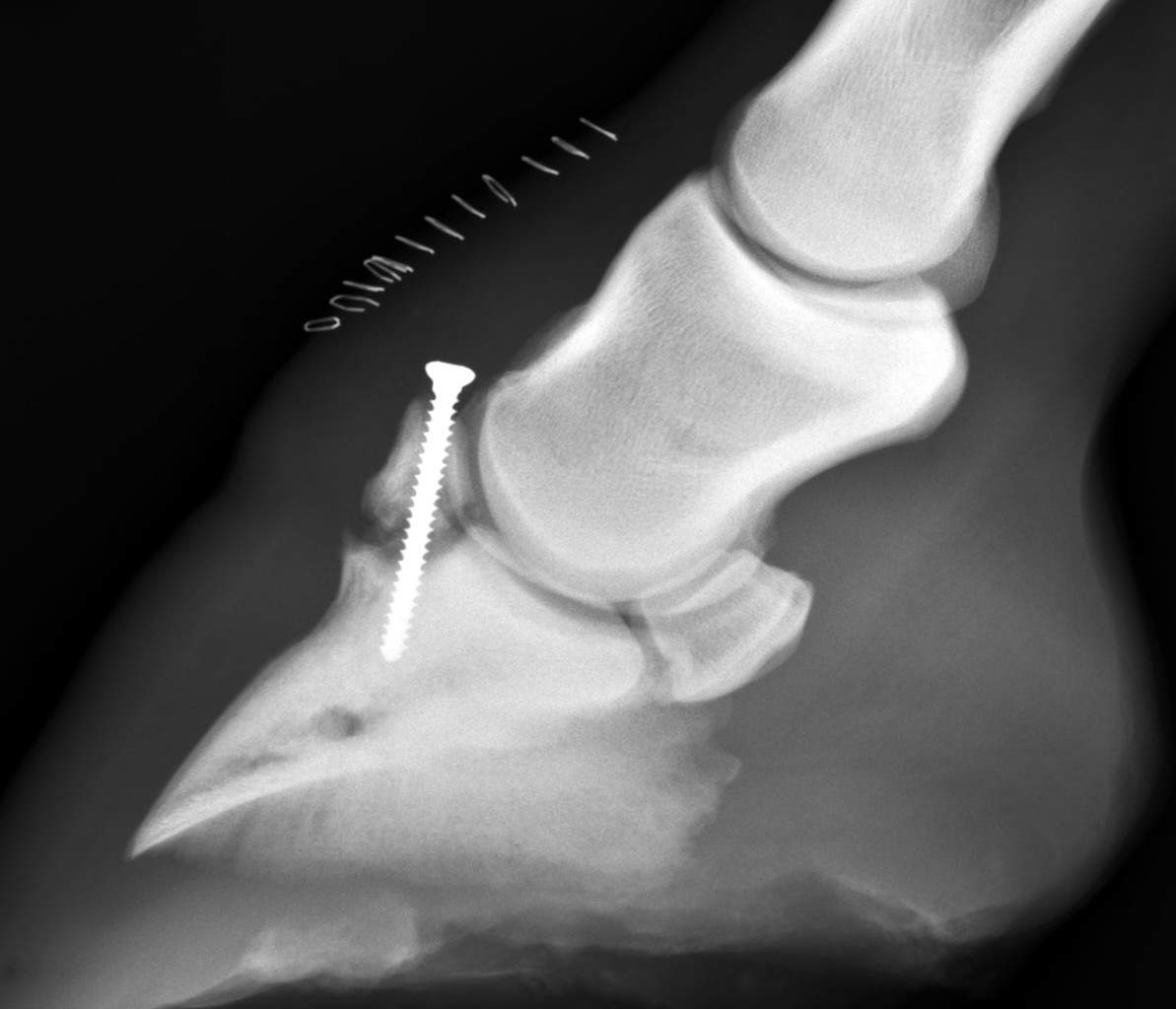Osteosynthesis is still a challenge in equine medicine. Our surgeons have the ability and capability to repair most of the fractures.
Fractures and exostosis on the splint bones of the horse appear quite often. Prognosis after splint bone amputation of the distal third is normally good due to the stability of the third metacarpal/-tarsal bone. Open fractures involving the distal third of the bone can also be surgically treated whereas fractures in the proximal third of the bone are treated conservatively.
Fractures of the distal phalanx are diagnosed in horses of all ages, even very young foals. The location and severity of the fracture dictates the treatment and the prognosis. Abaxial fractures without joint involvement are supported with a bar shoe with large side clips and a fiberglass cast around the hoof capsule. Stall rest for 2 to 4 months is required with a good prognosis. Prognosis of axial fractures with joint involvement is not as good, because of the articular involvement. They can be treated conservatively or surgically with screw fixation.
Fractures of P2 are rare but if they occur, prognosis is normally poor due to their pluryfragmentary appearance.
Fractures of the proximal phalanx are very often sagittal stress fractures. In these fractures, lag screw fixation and a fiberglass cast is usually the treatment of choice with a good prognosis for future soundness
Fissures in the proximal aspect of the proximal phalanx are normally treated conservatively with box rest and in agitated patients additionally with a fiberglass cast
Long bone fractures are defined as those affecting the major diaphyseal bones of the axial skeleton (humerus, radius, femur and tibia) and are still challenging even for the experienced surgeon. Prognosis is depending on the age and weight of the horse, the nature of the fracture (open or close fracture, complete or incomplete fracture, number of fragments) and the involvement of one or more joints.
Realistically, other than ulnar fractures, for which adult horses can usually be restored to athletic function, the consequence of a major diaphyseal fracture in an adult horse is often salvage for breeding at best, and frequently euthanasia.
Fractures of the ulna (especially in the region of the olecranon) are one of the most common proximal limb fractures of young horses. Overall there is a good prognosis for recovery with appropriate management and most horses will have a productive career.
Surgeon and owner should come to the decision to treat an animal or not with consideration of the animal`s welfare, financial aspects and the chance to repair the fracture anatomically to give a good prognosis for future soundness.
Reasons why fracture repair is still a challenge
- Due to the horse`s weight there is a strong mechanical stress on the fractured bone during recovery and rehabilitation phase.
- A supportive fiberglass cast higher than radius/tibia is not possible.
We have the opportunity to reduce the mechanical stress on the fractured limb with the help of a swing lifter. The swing lifter allows the patient a long term partial relief of the musculoskeletal system from 50-200kg. The horse can move freely inside the box and even lay down.
- osteosynthesis
- lower jaw fracture
- ellbow fracture
- P1 fracture
- P3 fracture

